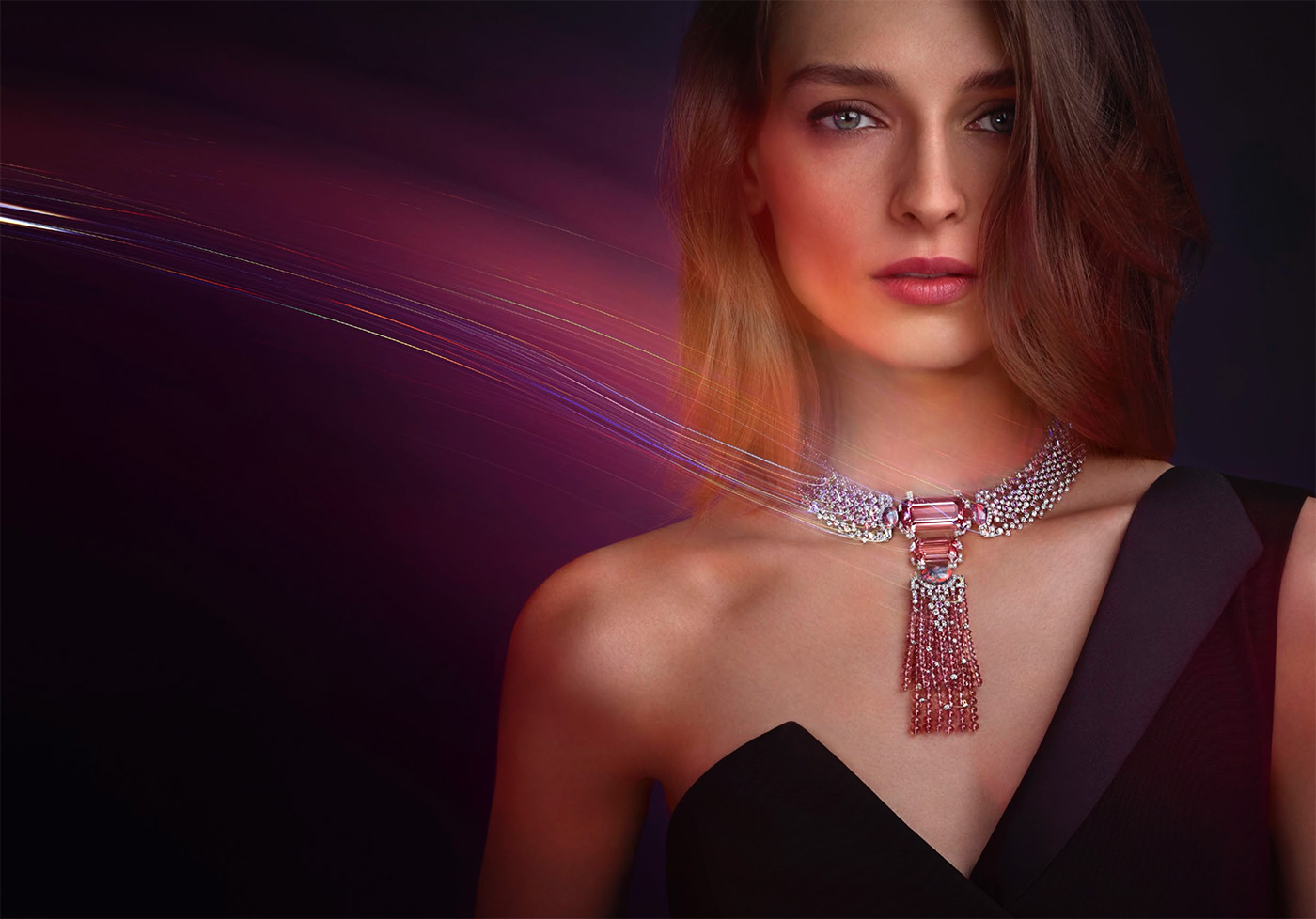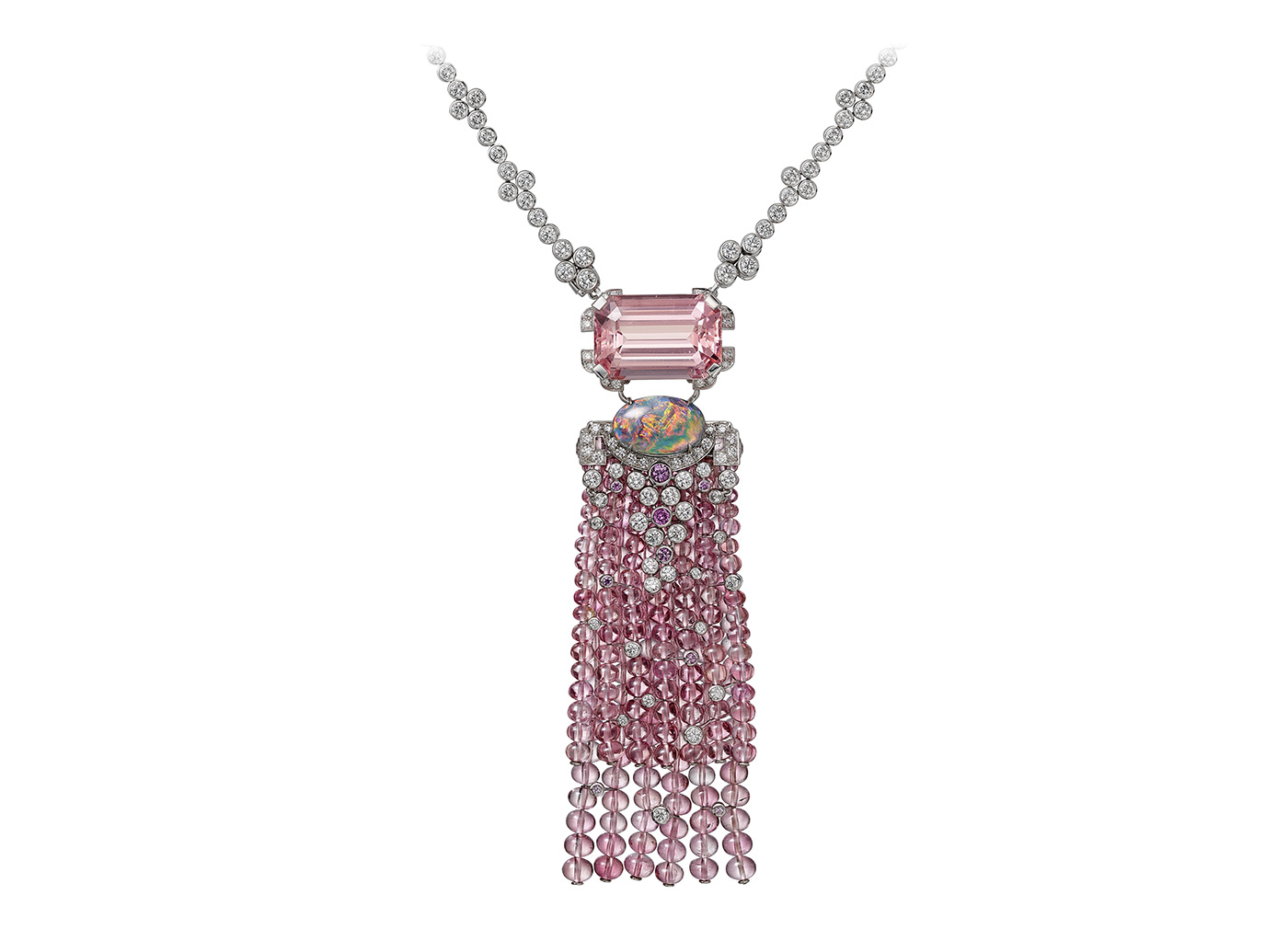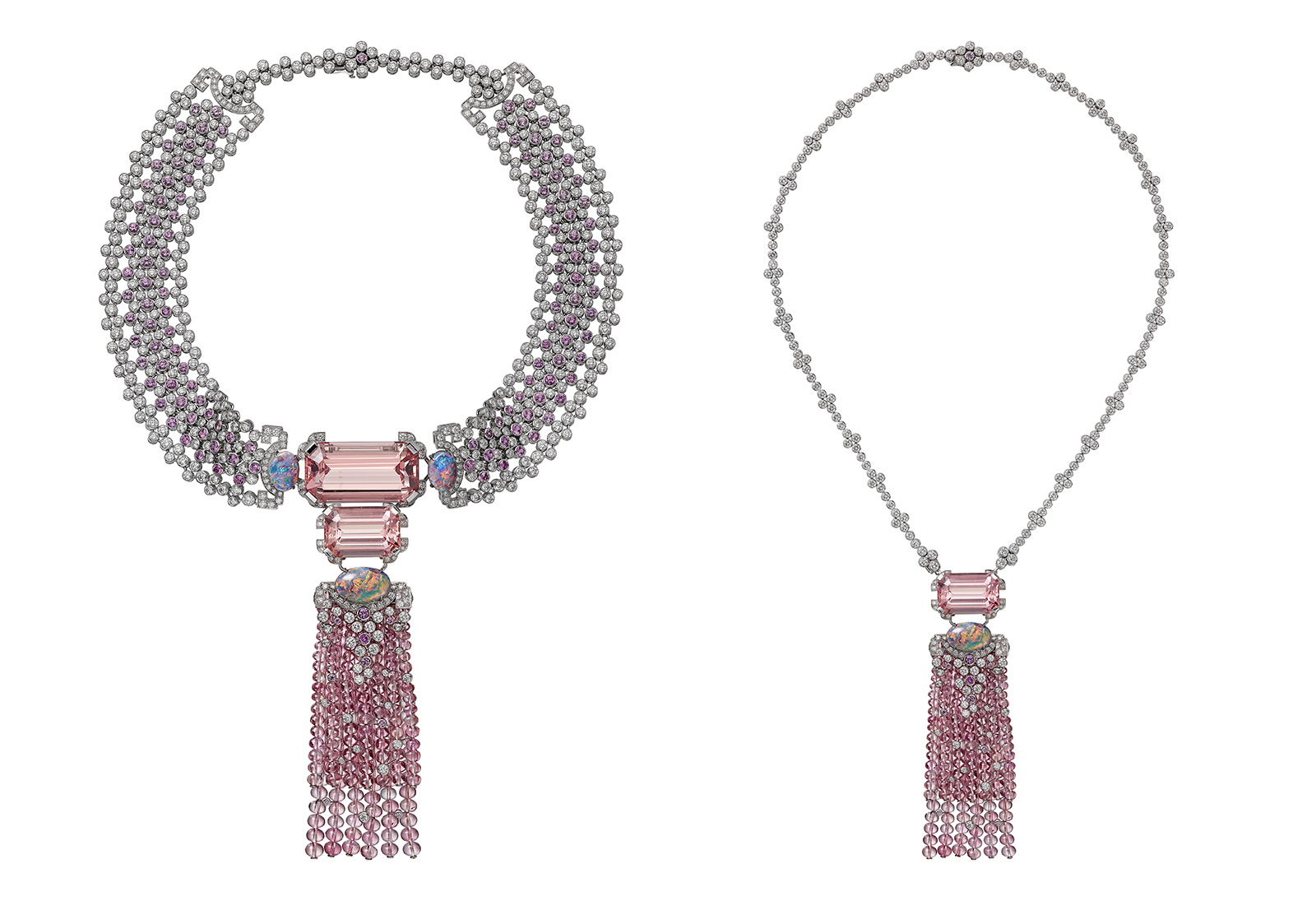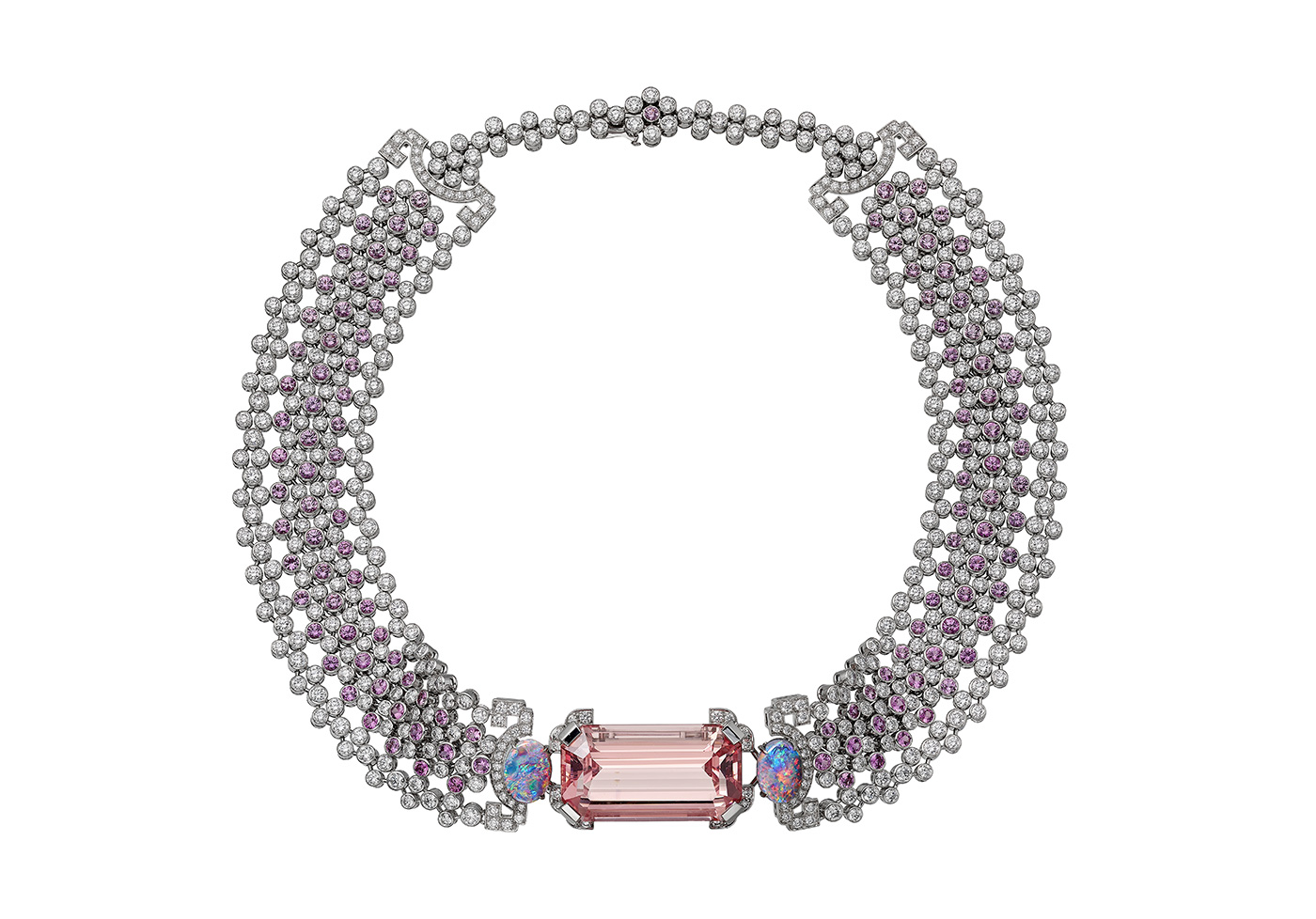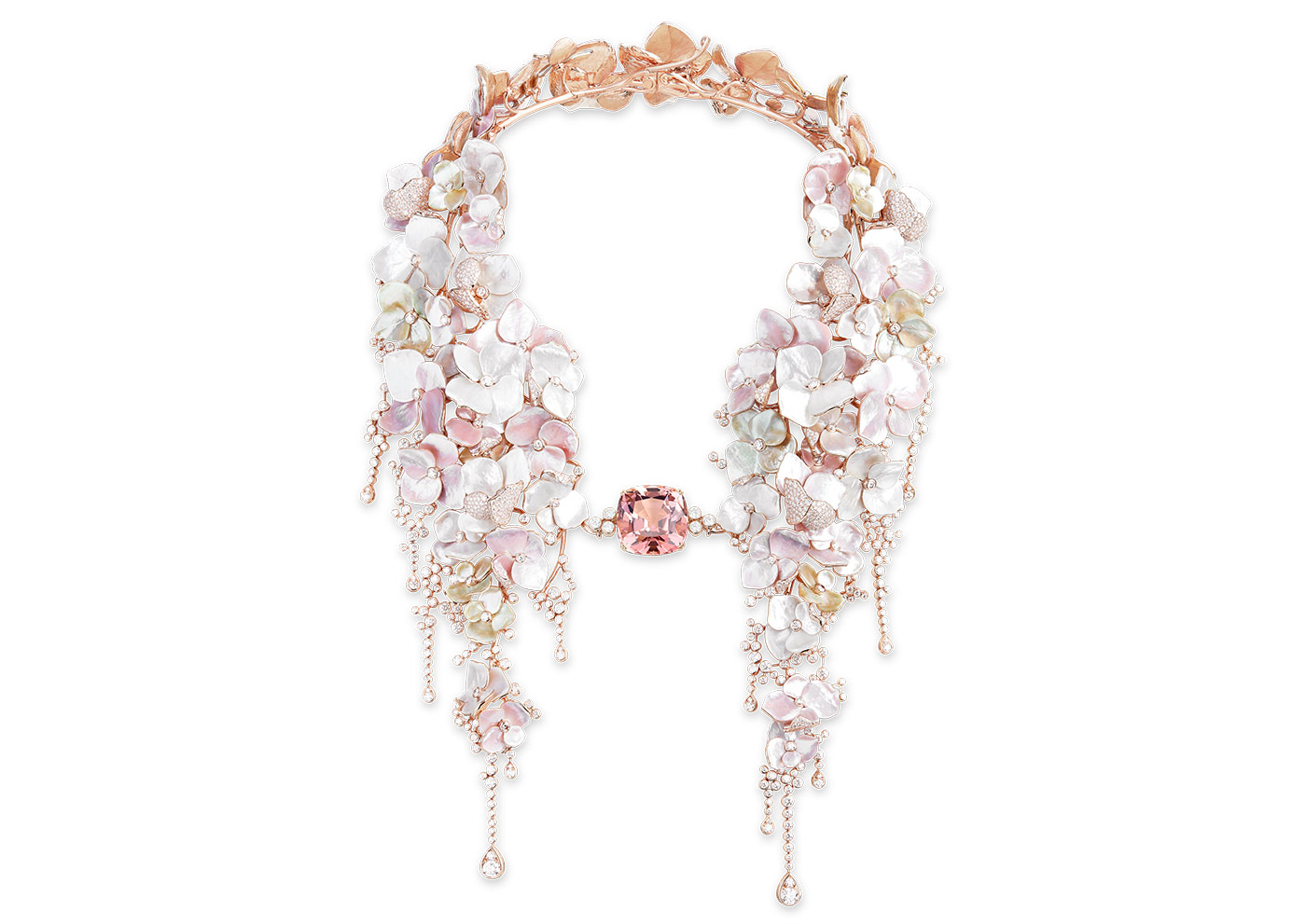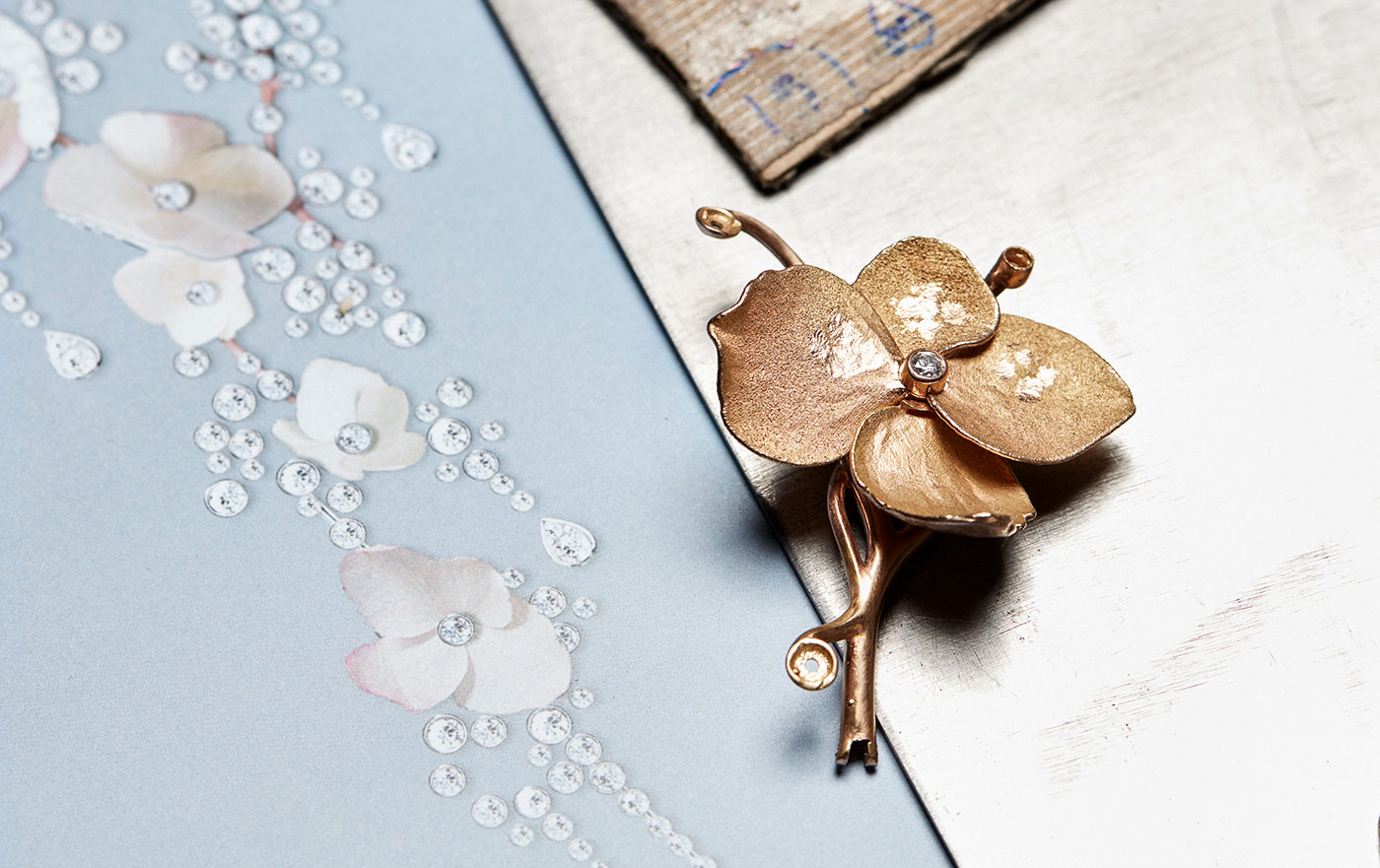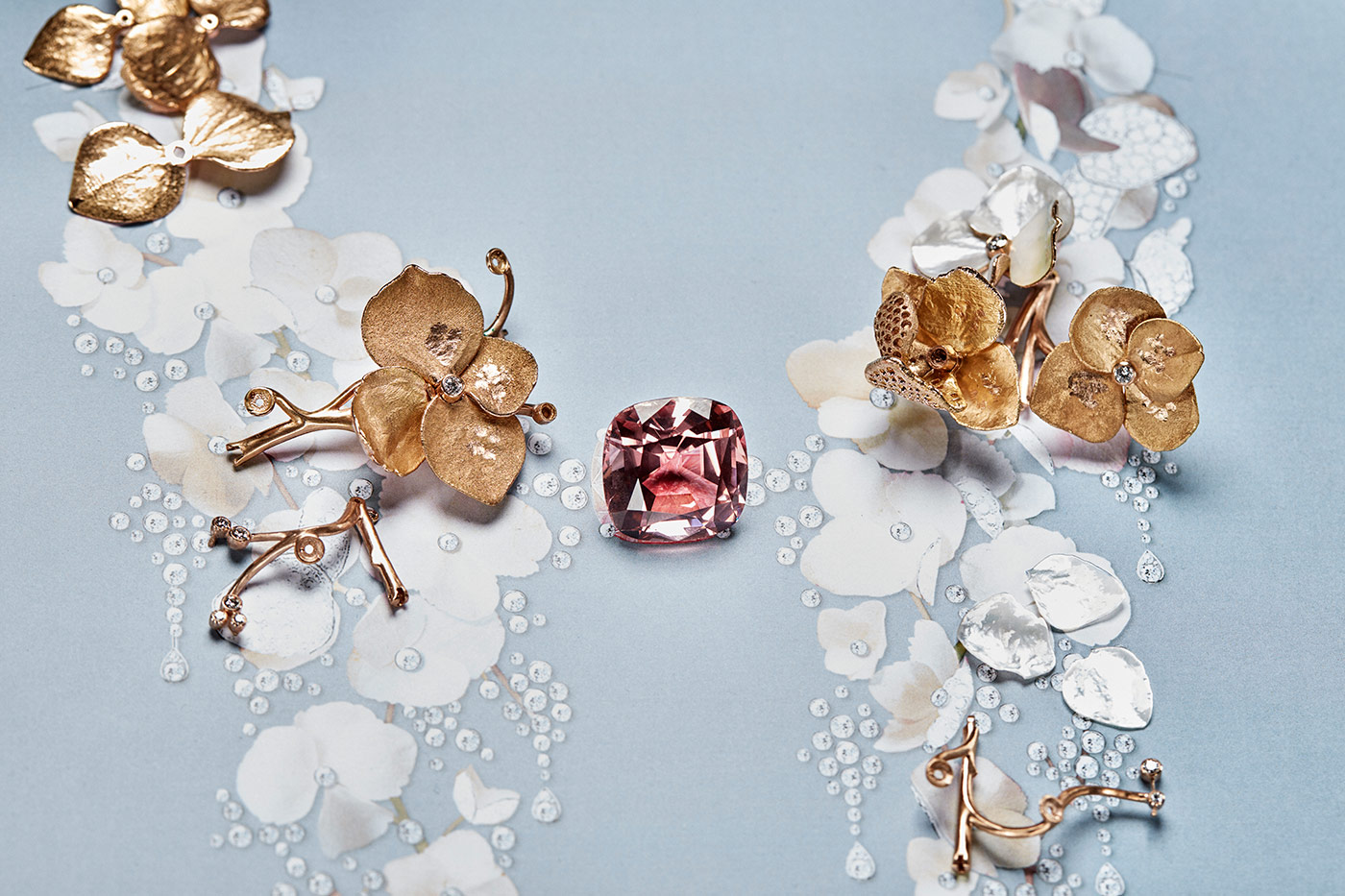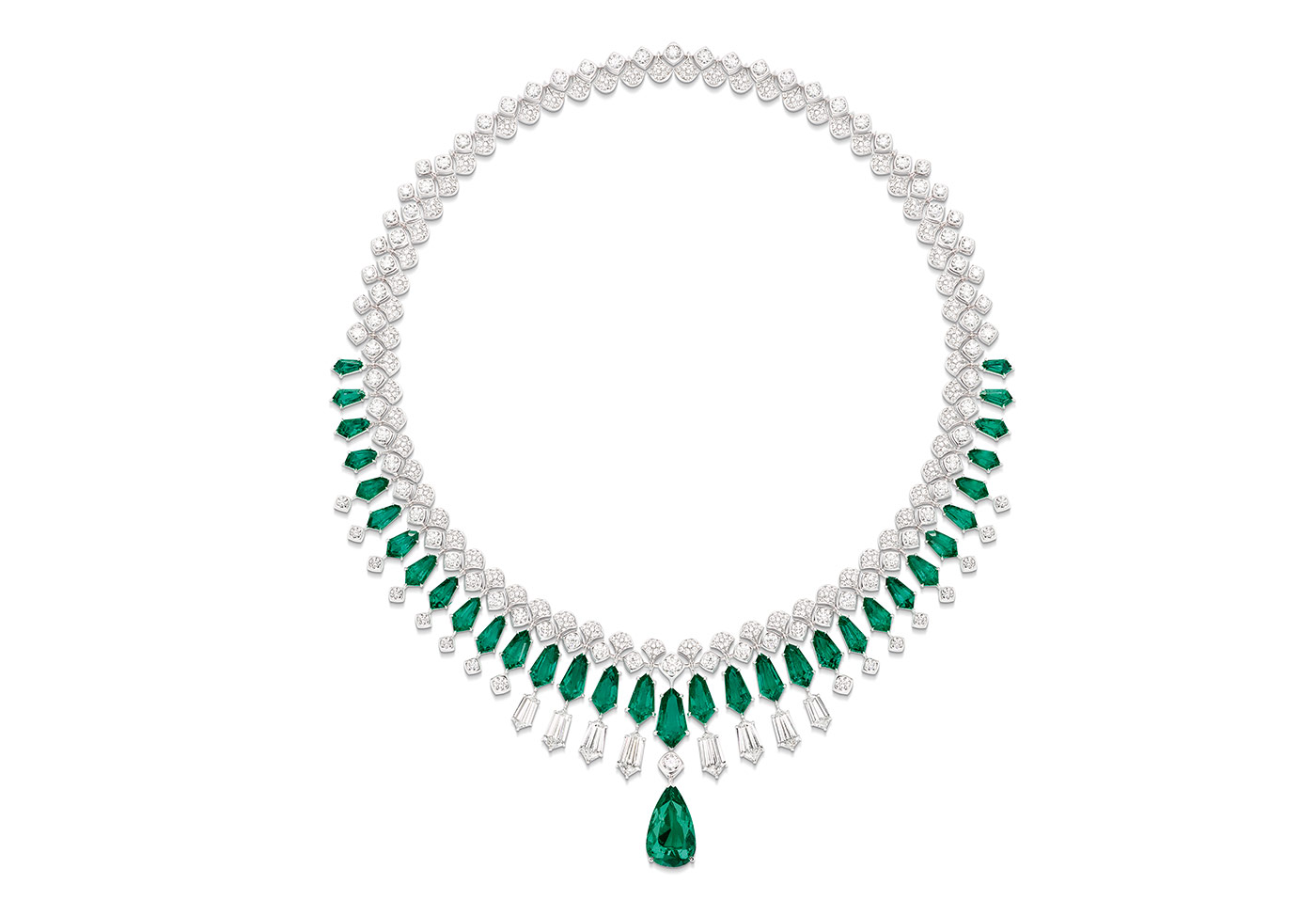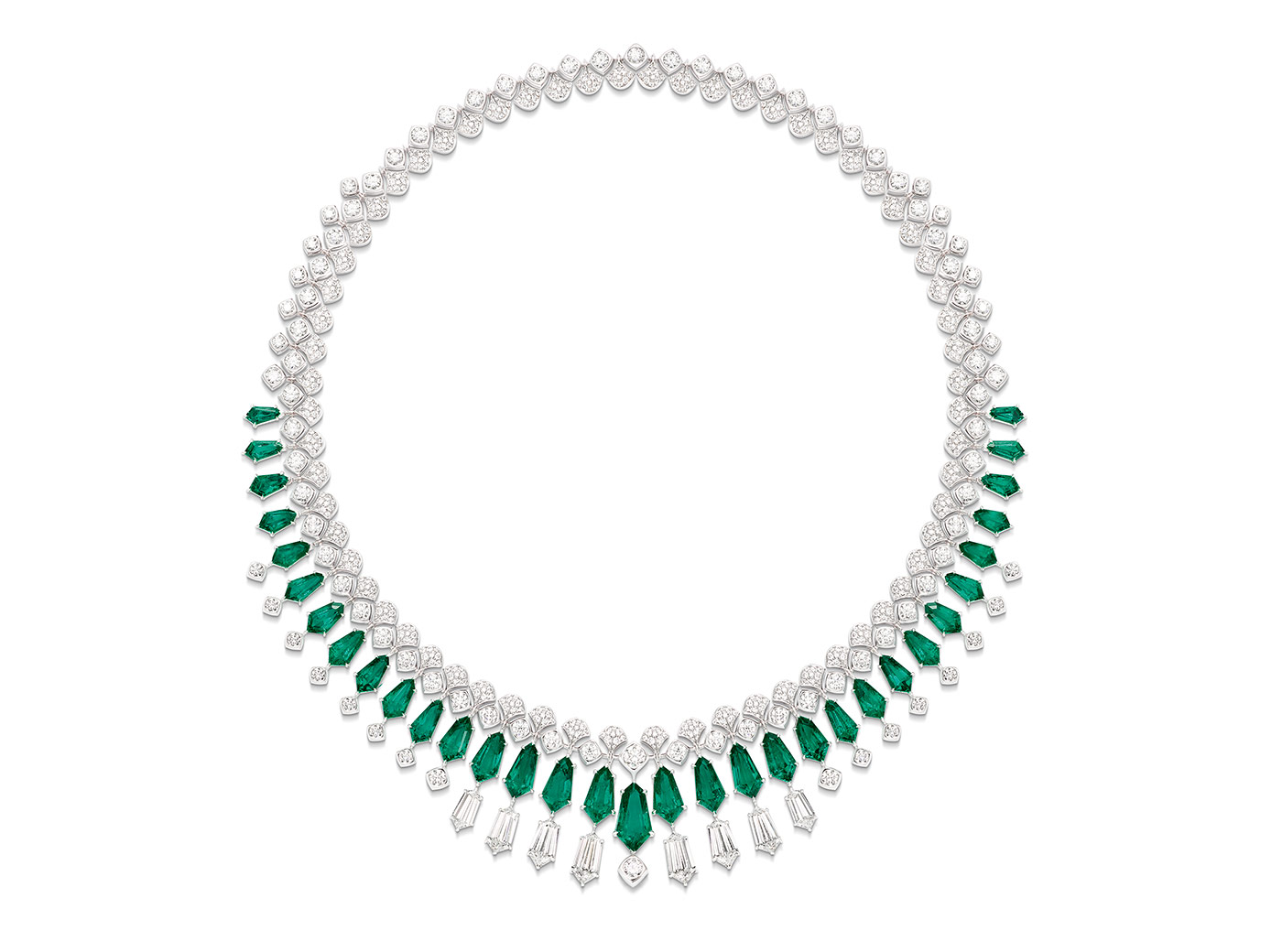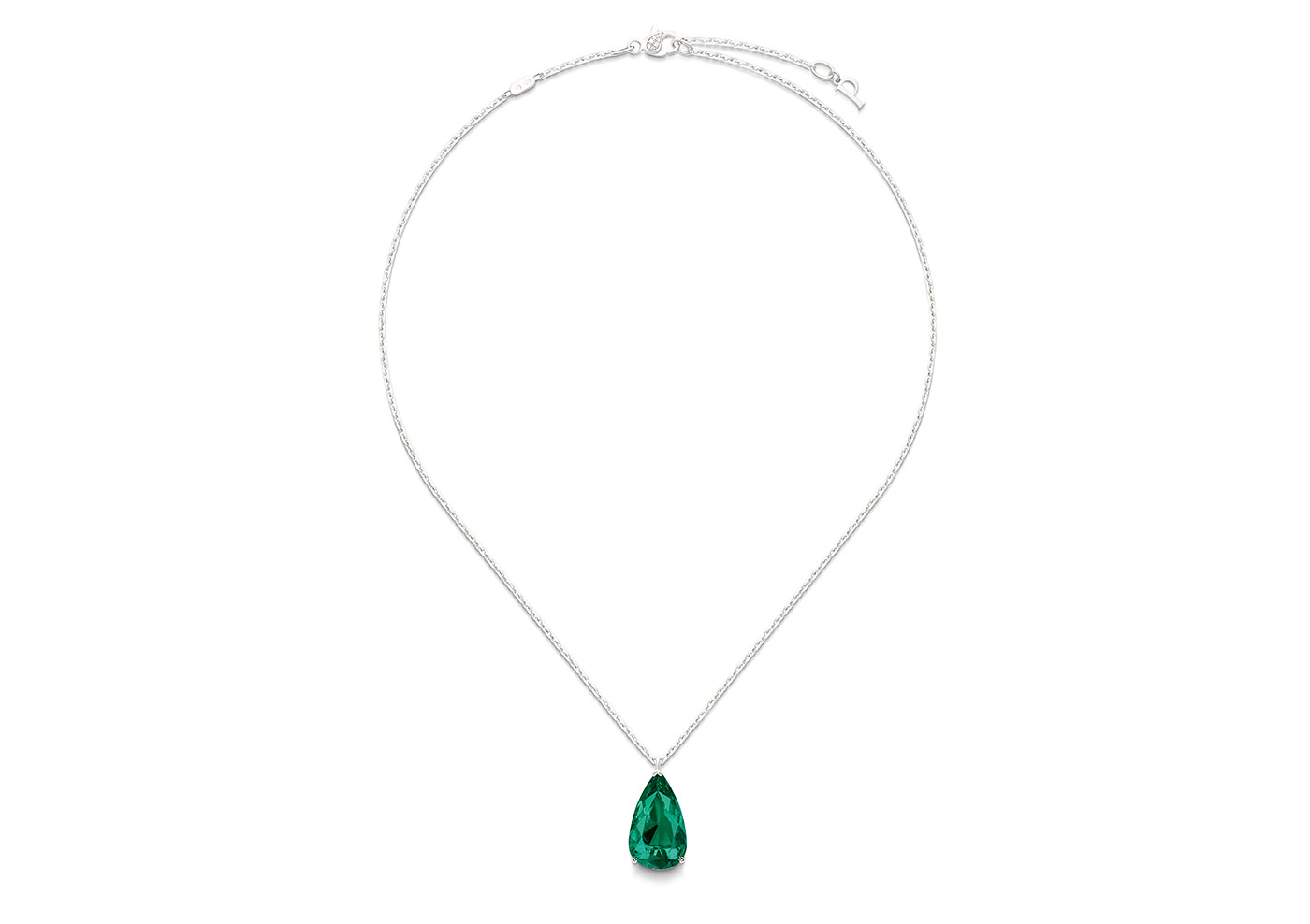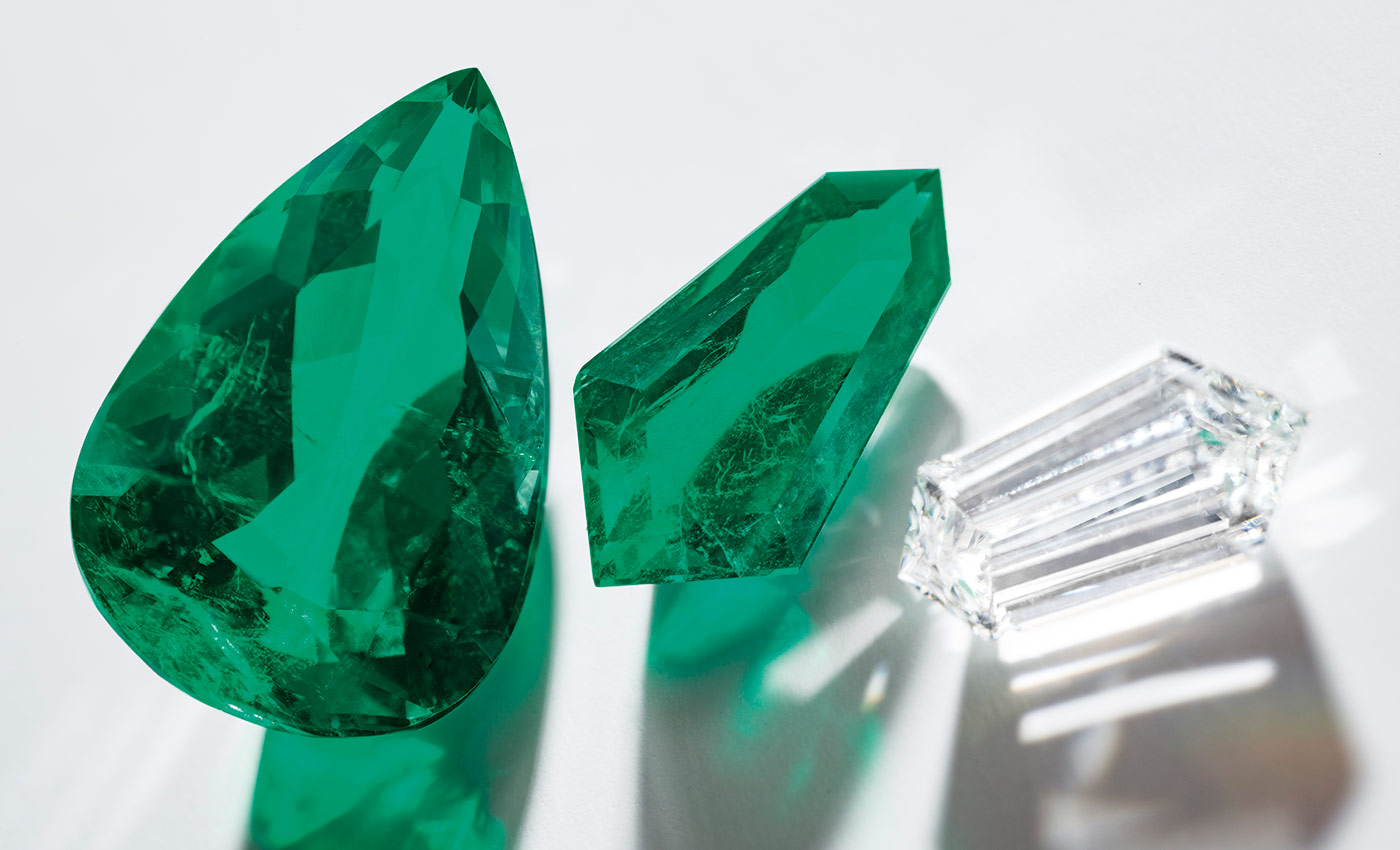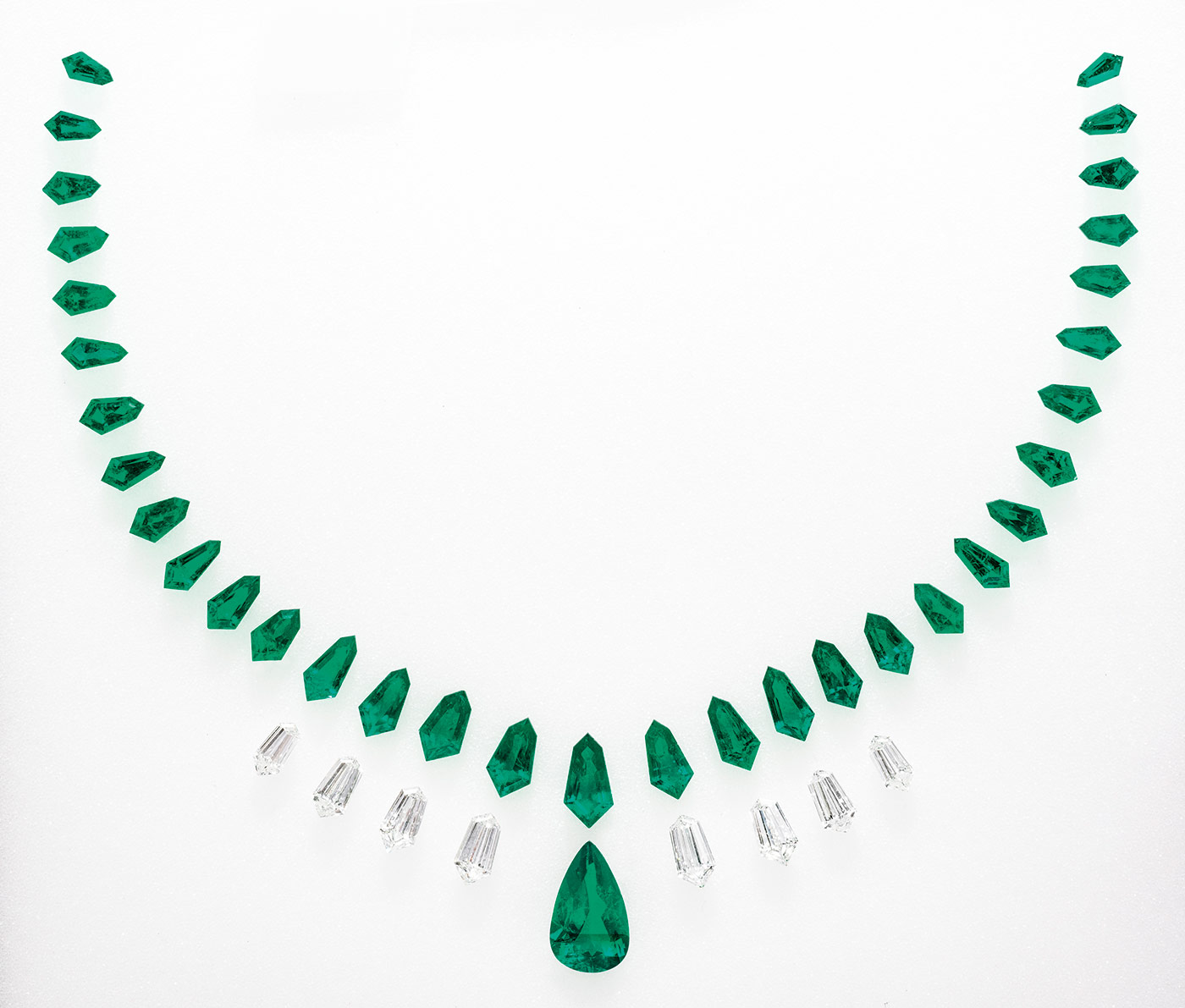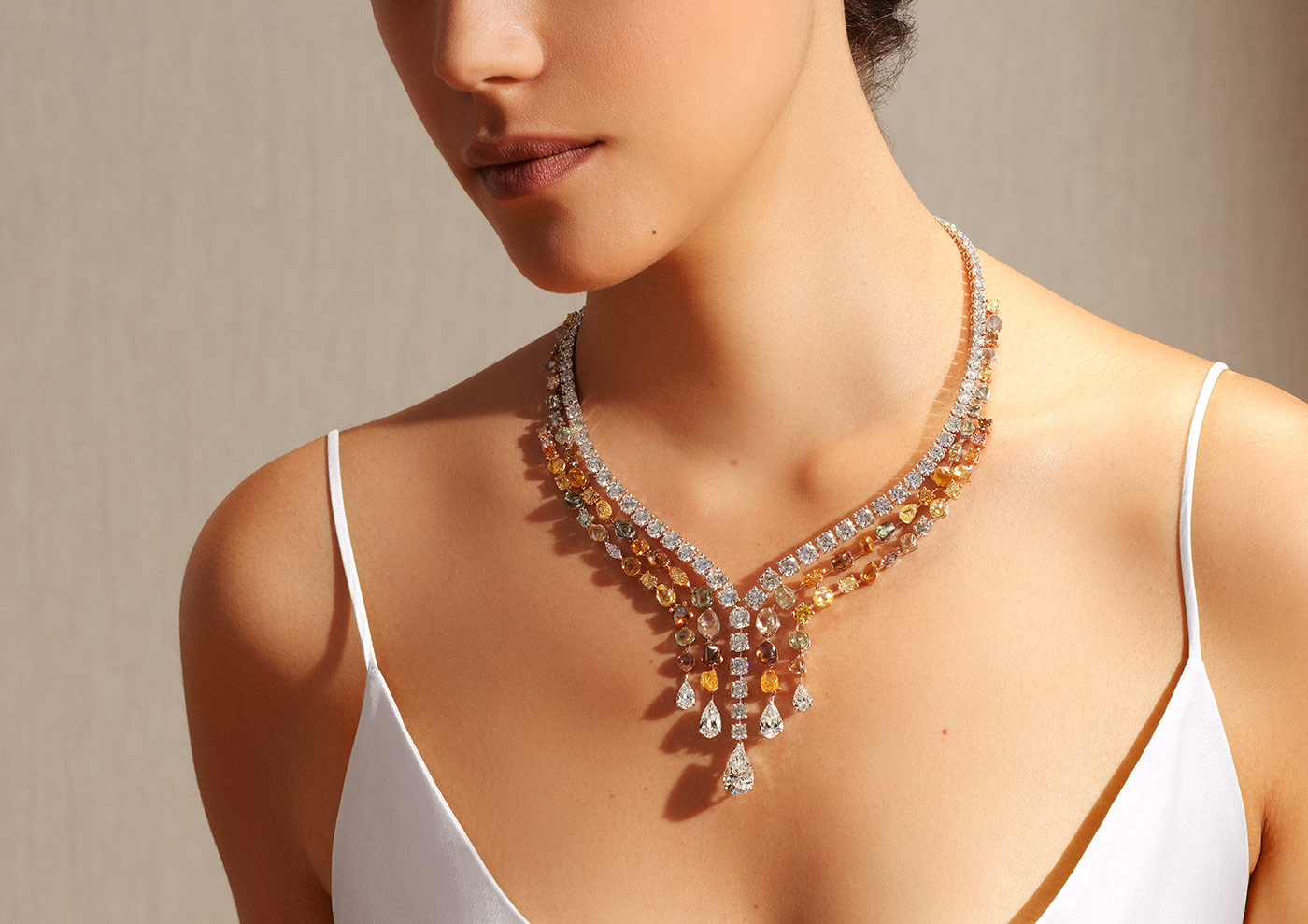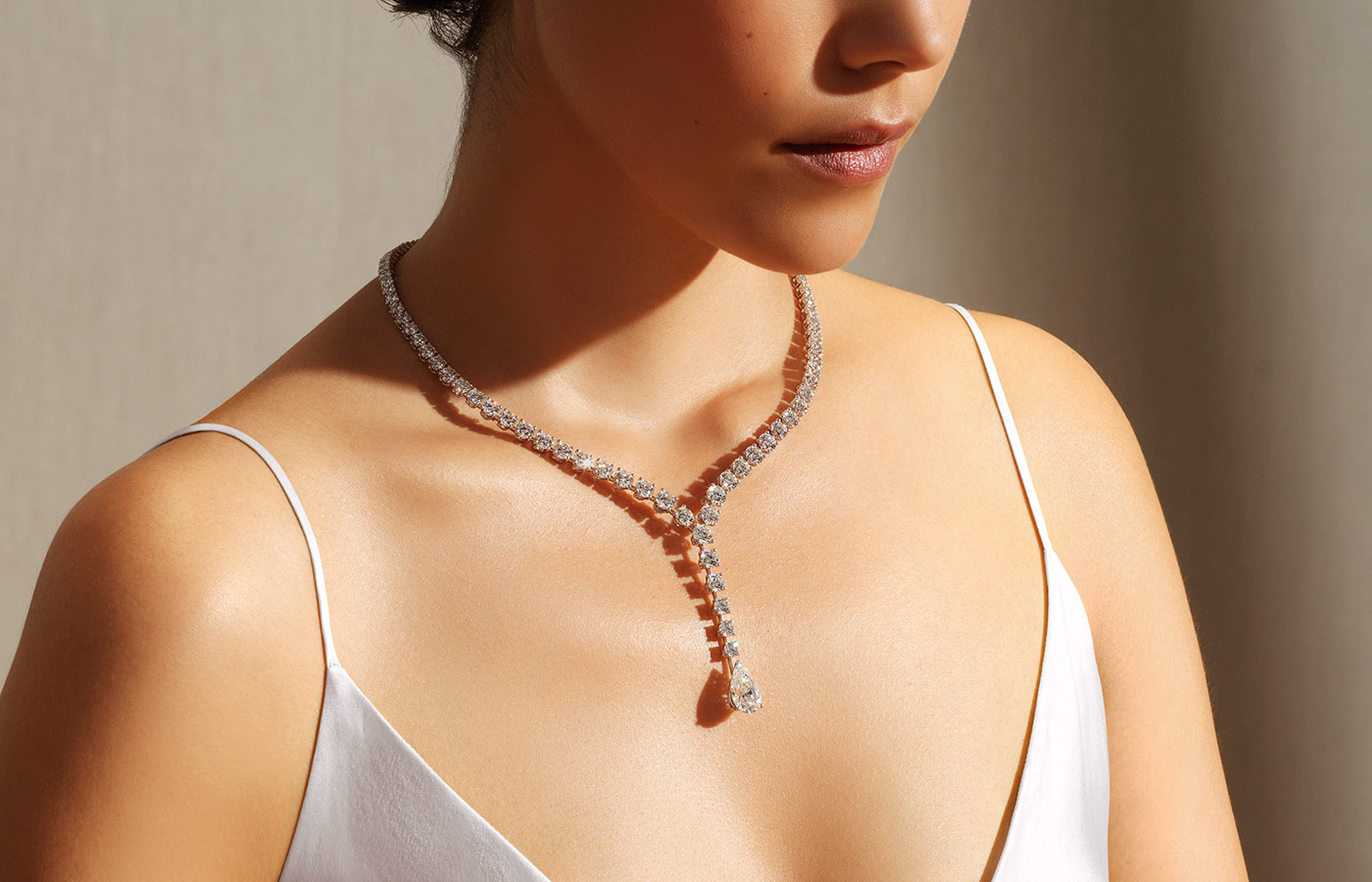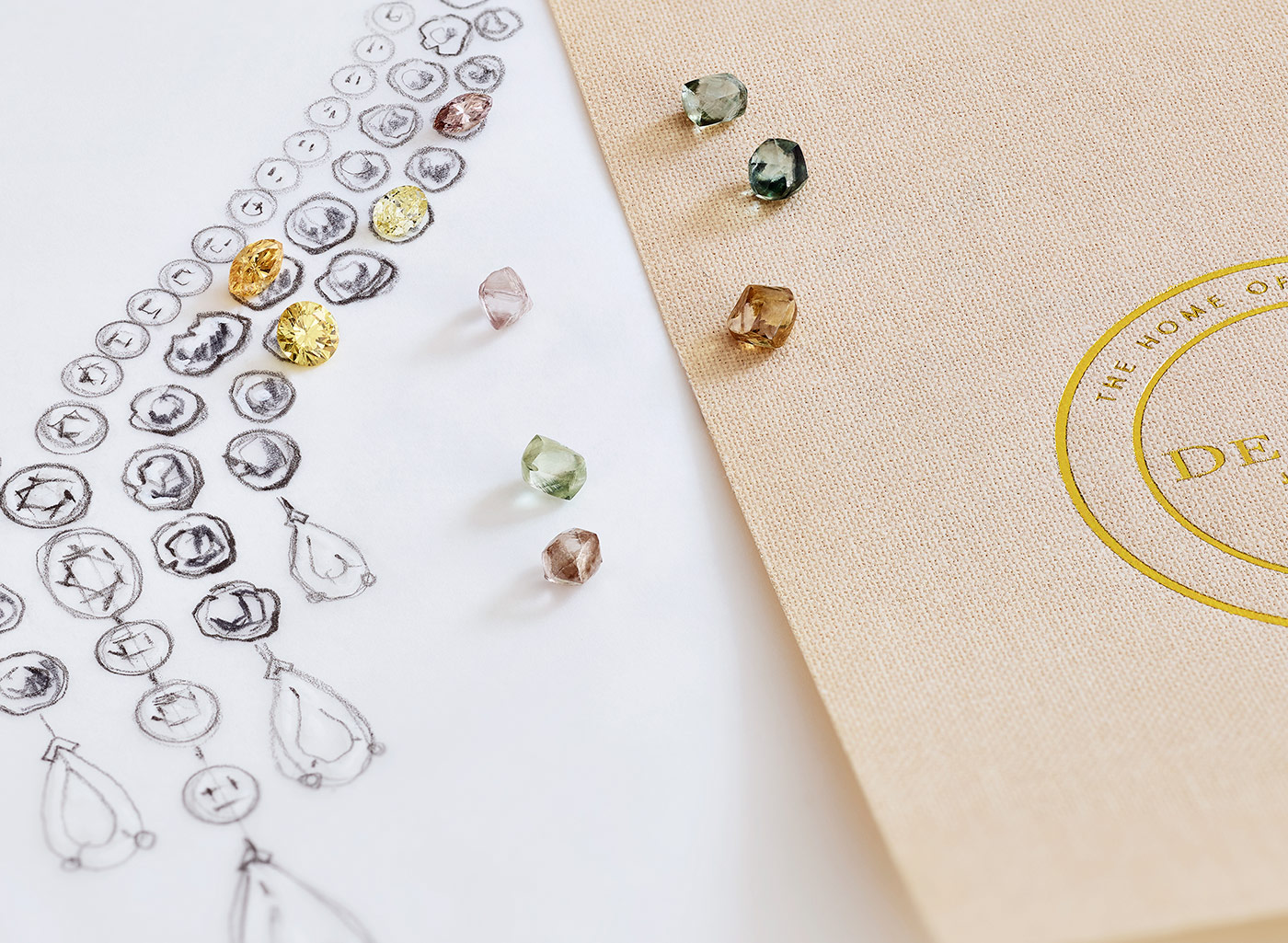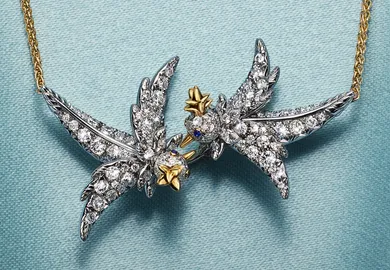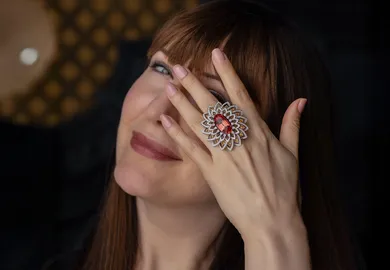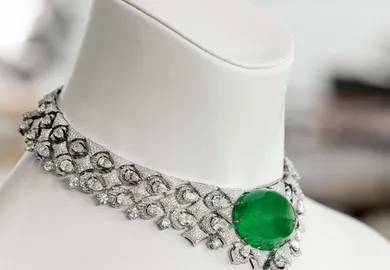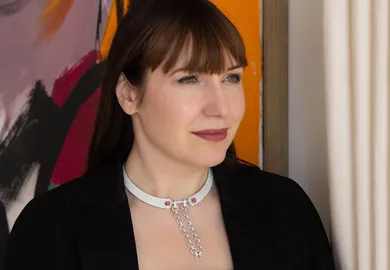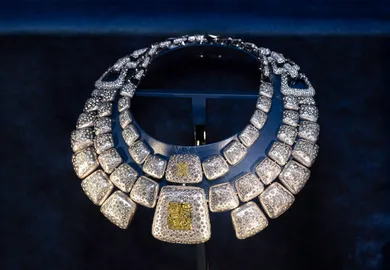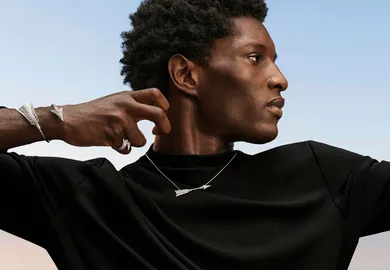
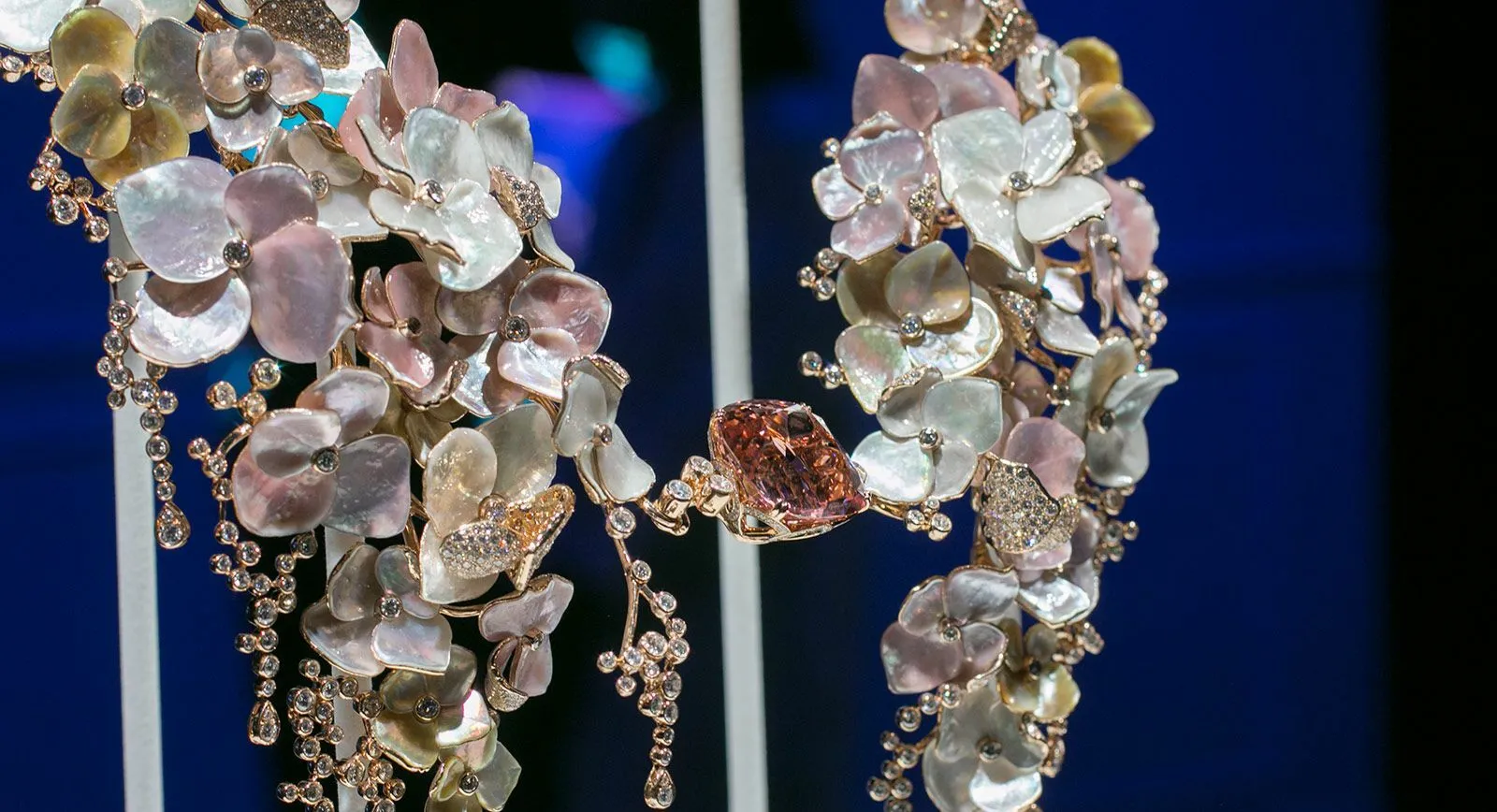
Paris Haute Couture Week: Enchanting Necklaces from Fine Jewellery Collections
For me, Paris Haute Couture Week is a time of jewellery discovery, because all the leading houses present their latest high jewellery art collections. Of all the pieces on display, the most impressive are – as a rule – the grand necklaces. They become the centre point of new collections, and in this article I shall bring to your attention the most striking of them, presented at this year’s Haute Couture Week Paris.
The very first of these necklaces that I encountered was in the ‘Coloratura’ collection from Cartier – the embodiment of a storm of colour. Creating pieces that bear the house’s signature motifs, the key design idea was to include gems in every colour of the rainbow. The largest pieces in the collection were necklaces, of which there were several dozen. The standout piece for me was the ‘Yoshina’ necklace, with its majestic 55 carat morganite, as well as opals, tourmaline beads, pink sapphires and diamonds. It can be transformed into 3 different styles of necklace.
No less colourful was the latest collection from Van Cleef & Arpels, ‘Quatre Contes de Grimm’, dedicated to four tales by the Brothers Grimm. All the subjects – be they abstract interpretations of a fantasy world or more ‘literal’ incarnations of the Grimm stories’ protagonists – are saturated with decorative elements and juicy gems. The most appetising piece in the collection was the ‘Demoiselle Gracieuse’ necklace, with 12 glorious rubellites surrounded by an entourage of pink sapphires, pearls, and diamonds.
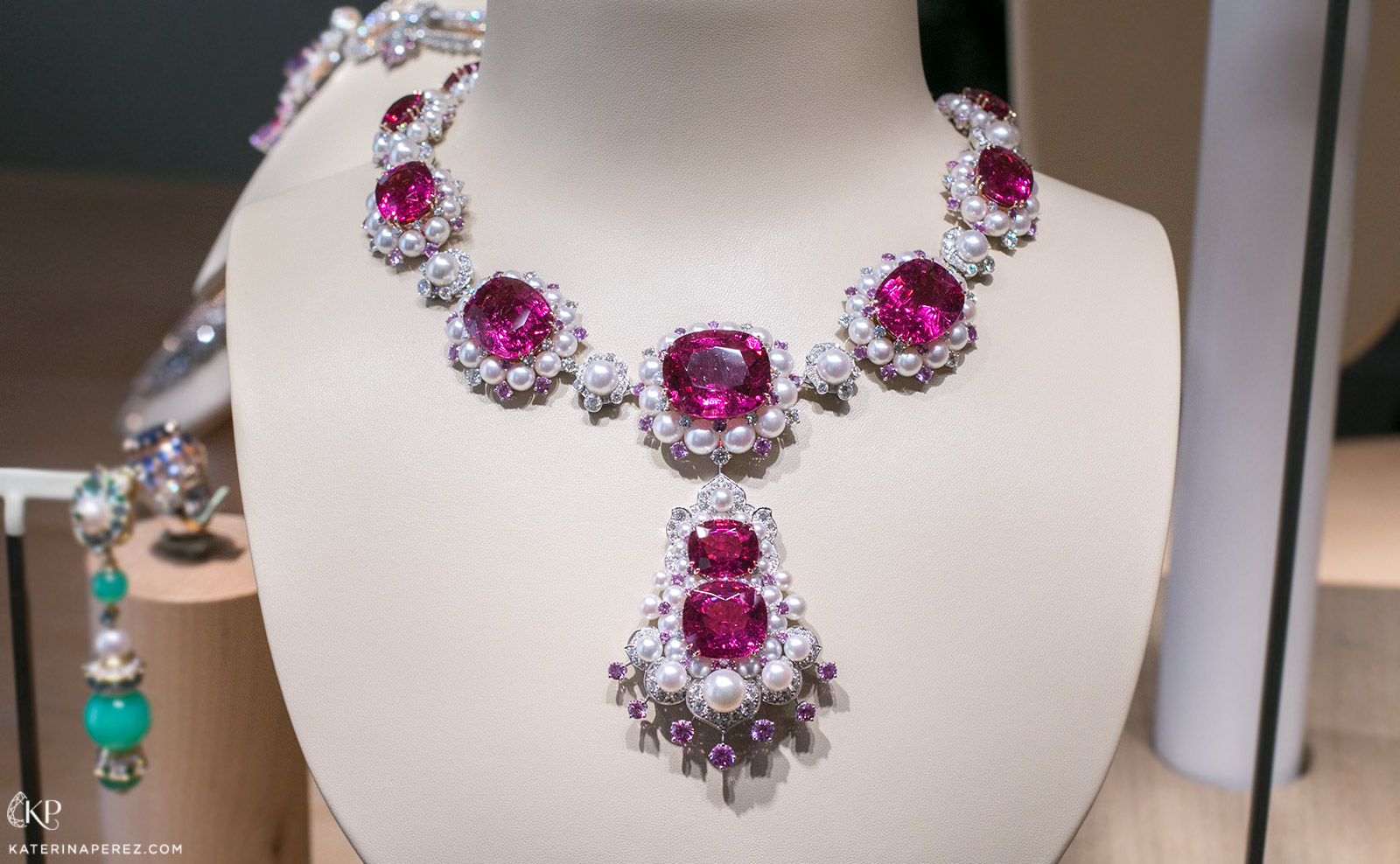
Van Cleef & Arpels ‘Demoiselle Gracieuse’ necklace from the ‘Quatre de contes Grimm’ collection with 12 cushion cut rubellites totalling 206.68 ct, pink sapphires, pearls and diamonds
The new Boucheron collection ‘Nature Triomphante’ is dedicated to flora, and is rich in luxurious necklaces – and the scenes they depict are equally plush. Among the diverse interpretations of flowers and plants is the enchanting necklace ‘Nuages de Fleurs’ (Flower Clouds) with a pink tourmaline of 42.96 carats. However, its uniqueness lies not only in the feature stone, but in the myriad of blossoming buds stemming from it, whose petals are carved from mother of pearl. Each of the budding flowers looks incredibly realistic due to the expert imitation of the natural curves and weightlessness of petals. This replication of nature by the jewellery masters of the house would have been incredibly difficult, because mother of pearl is a notoriously fragile material to work with.
The inspiration behind the new high jewellery art collection from Chanel were the screens which had been collected by Gabrielle Chanel at her private apartment. The images that decorate the screens were unobtrusively transformed into the ‘Coromandel’ precious jewels. The most difficult to execute was the ‘Horizon Lointain’ necklace in yellow gold, diamonds, and mother of pearl. Looking at it, you may only see a complex geometric compilation of precious materials. However, take two steps back and another picture takes shape before your eyes: the diamonds are trees, the mother-of-pearl is mountains, and the golden waves are images of clouds taken from one of Gabrielle’s coveted screens.
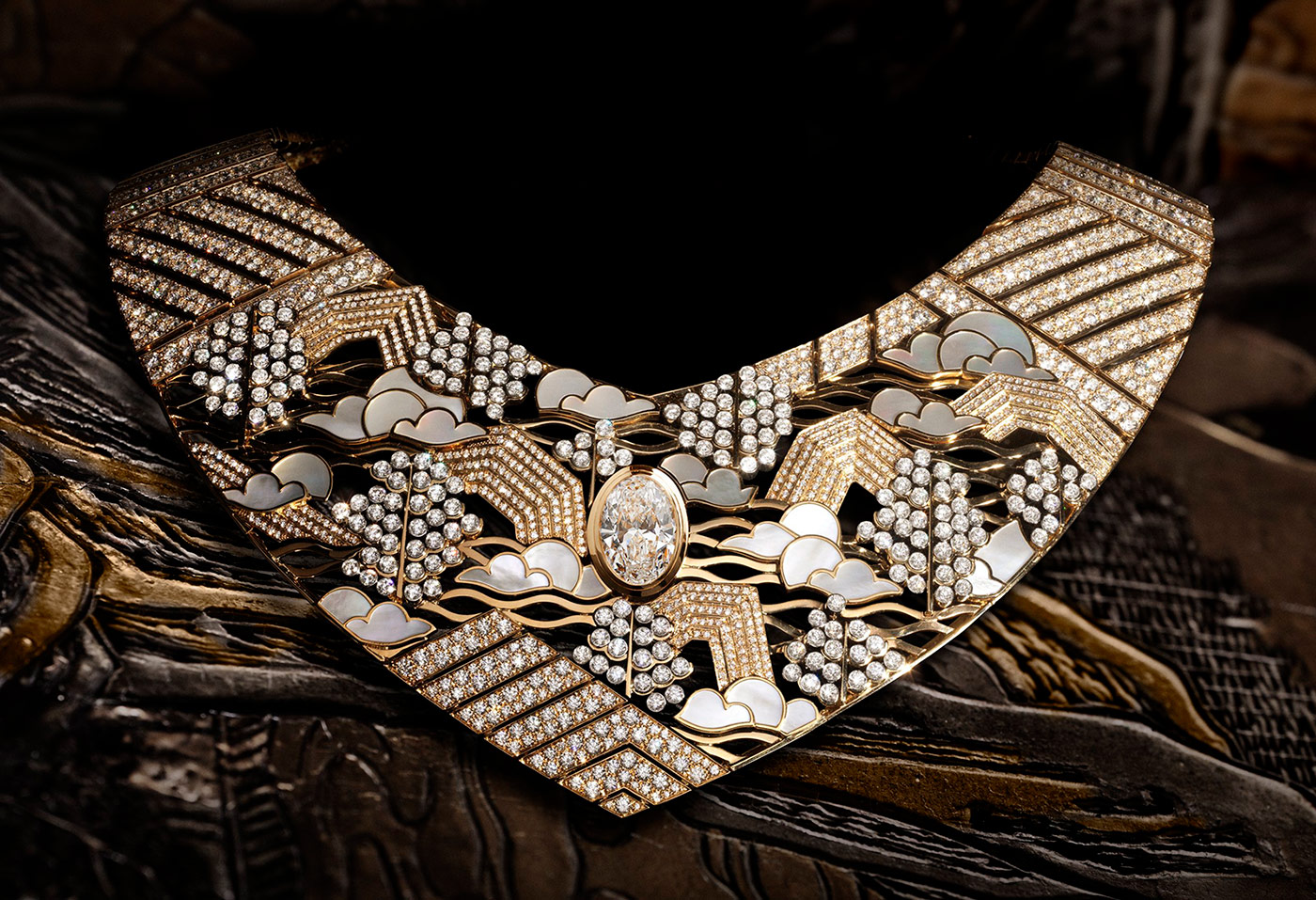
Chanel ‘Horizon Lointain’ necklace from the ‘Coromandel’ collection in diamonds, mother of pearl and yellow gold
The Swiss house Piaget continues to develop its motif of sunrise and sunset, launched last season, with a referral to the incredible colours of a star-studded sky. It is for this reason that many of the pieces this year were made in a blue-green colour palette, diluted here and there with yellow and red hues. However, I personally was most attracted not by the range of colours but by the original cut of the stones, especially in the ‘Green Borealis’ necklace. 33 Colombian emeralds and 8 diamonds were carefully chosen for their colour and trapezoid cut – a fancy cut which is rare in jewellery art.
Another example of the original stone cuts I found was in De Beers’ latest collection, ‘Diamond Legends’. Specialising in diamonds, the company has introduced a completely unique transforming necklace, ‘Vulcan’. It is decorated with uncut diamonds in various shades which descend in two rows along a line of colourless brilliant cut diamonds. If you so desire, they can be removed and worn in a classic version with a pear cut diamond pendant.
Sadly, in one article I cannot accurately depict the vast variety of the masterpieces I encountered in Haute Couture Week Paris. However, I hope you have an idea of how each jewellery house has its own unique approach to creating high jewellery art.

WORDS
Katerina Perez is a jewellery insider, journalist and brand consultant with more than 15 years’ experience in the jewellery sector. Paris-based, Katerina has worked as a freelance journalist and content editor since 2011, writing articles for international publications. To share her jewellery knowledge and expertise, Katerina founded this website and launched her @katerina_perez Instagram in 2013.
